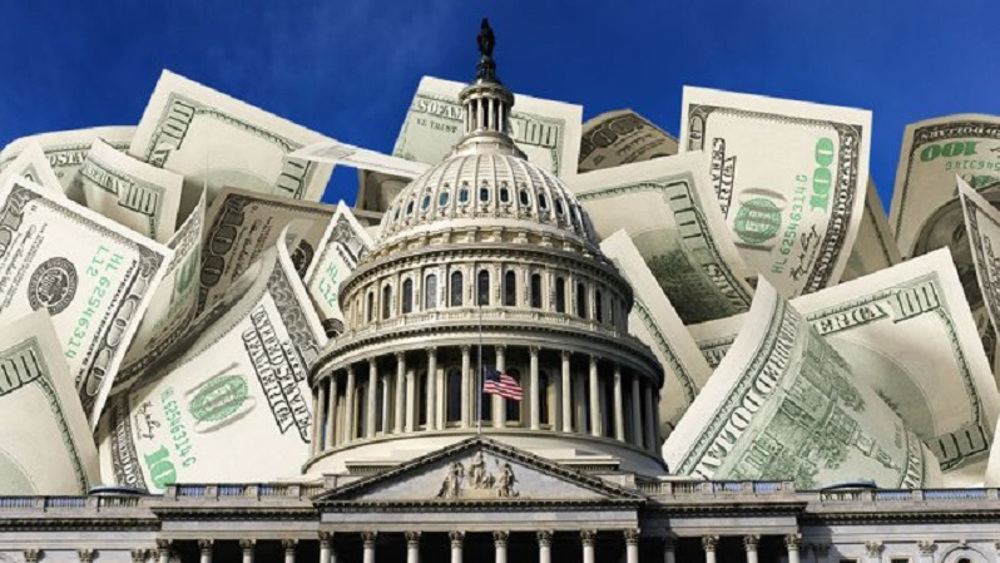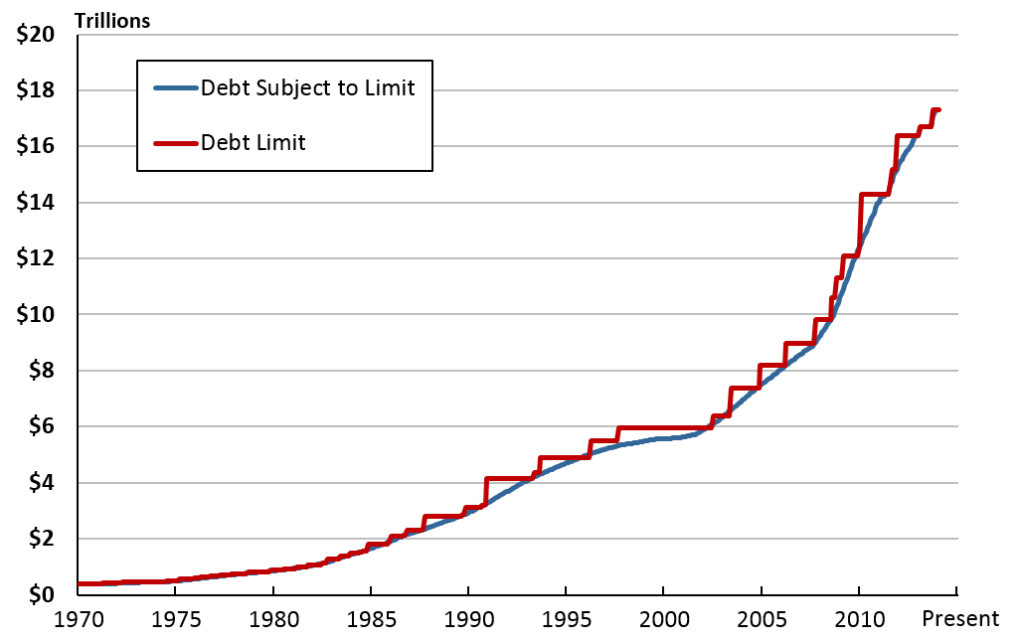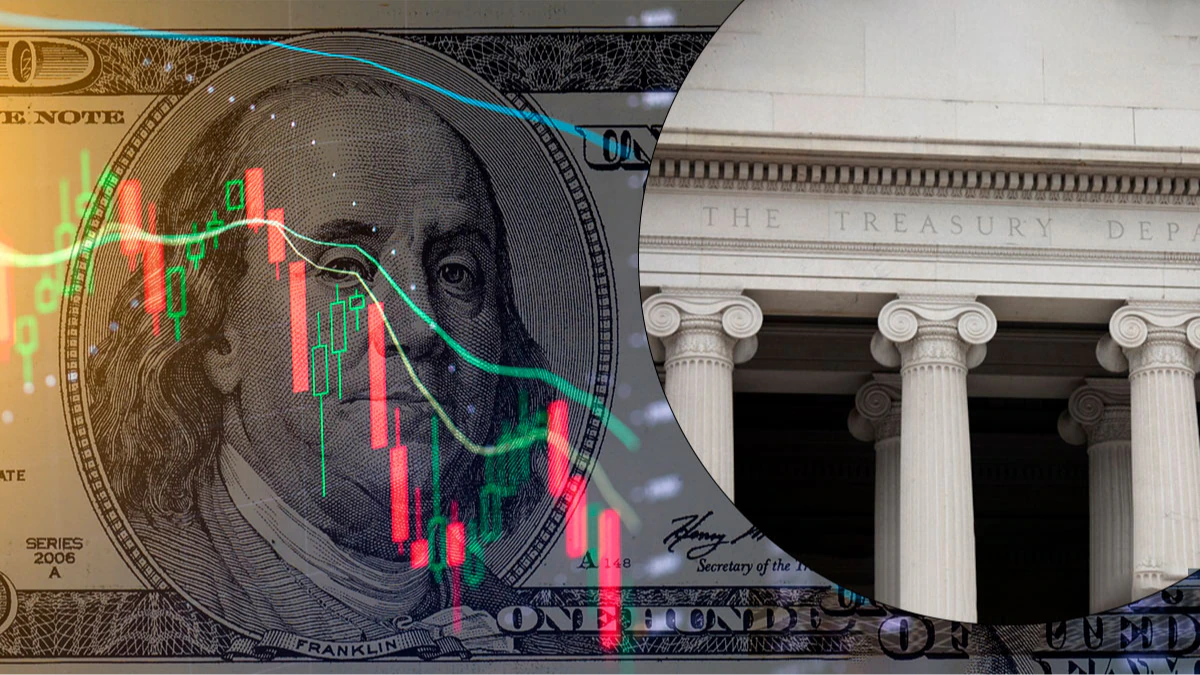
Introduction:
The United States debt ceiling is a critical aspect of the country’s fiscal management. This comprehensive guide aims to provide an in-depth understanding of the debt ceiling, its significance, the ongoing debates, and the potential consequences of not raising it. Additionally, we will explore the strategies for reducing the deficit and debt, as well as the role of the US dollar in borrowing and debt management.
What is the Debt Ceiling?
The debt ceiling is a legislative limit that restricts the amount of debt the US Treasury can incur. It sets a maximum threshold for borrowing, influencing the government’s ability to finance its operations, pay its obligations, and fund vital programs. To help clarify the concept, let’s consider a simple example:
Imagine you have a personal credit limit on your credit card. This credit limit represents the maximum amount of money you can borrow from the credit card company. Similarly, the debt ceiling functions as a credit limit for the US government.
For instance, let’s say the debt ceiling is set at $30 trillion. This means that the US Treasury is not allowed to borrow more than $30 trillion to cover the government’s expenses, such as funding federal programs, paying salaries, and servicing existing debt.
Now, let’s assume that the government has already borrowed $28 trillion and needs to borrow an additional $2 trillion to meet its financial obligations. However, if the debt ceiling is reached and not increased, the Treasury would be prohibited from borrowing that extra $2 trillion.
In this situation, the government would face difficult choices. It would either need to cut spending significantly to match its available funds or risk defaulting on its financial obligations. These choices have far-reaching consequences for the economy and can impact various sectors, including financial markets, interest rates, and the overall confidence in the US government.
Therefore, the debt ceiling plays a critical role in shaping the government’s ability to manage its finances and highlights the importance of fiscal responsibility and prudent budgeting.
The Importance of the Debt Ceiling:
The debt ceiling holds significant importance in maintaining the government’s financial stability, managing national debt levels, and ensuring responsible fiscal policies. Here, we will explore the significance of the debt ceiling and its impact on the economy, accompanied by an original example to illustrate its importance.
Managing National Debt:
The debt ceiling serves as a mechanism to control the growth of the national debt. It sets a limit on the amount of money the government can borrow, preventing excessive borrowing and promoting fiscal discipline. By imposing a cap on borrowing, the debt ceiling compels policymakers to evaluate spending decisions critically and prioritize fiscal responsibility.
Example: Imagine a household with a limited monthly income. They set a strict budget and establish a debt ceiling to prevent themselves from accumulating excessive debt. This debt ceiling acts as a safeguard against irresponsible spending, helping the household maintain financial stability and avoid overwhelming debt burdens.
Ensuring Government Accountability:
The debt ceiling fosters government accountability by requiring policymakers to seek congressional approval for increasing the borrowing limit. This forces lawmakers to engage in discussions about the nation’s fiscal health, prioritize spending, and consider the long-term consequences of accumulating more debt.
Example: In a company, the board of directors sets a debt ceiling that limits the amount of debt the company can undertake. If the management team wishes to exceed this limit, they must present a comprehensive plan to justify the additional borrowing and gain approval from the board. This ensures transparency, accountability, and responsible financial management within the organization.
Preserving Economic Stability:
The debt ceiling plays a crucial role in maintaining economic stability by averting potential default on government obligations. If the debt ceiling is not raised when necessary, the government may face difficulties in paying its bills, including interest on existing debt, salaries of federal employees, and critical program funding. Defaulting on these obligations can severely damage the country’s creditworthiness, leading to higher borrowing costs, market turmoil, and a loss of confidence from investors and creditors.
Example: Consider a small business that relies on credit to fund its operations. If the business hits its borrowing limit without the ability to raise it, it may be unable to meet its financial obligations, such as paying suppliers or employees. This could lead to a loss of credibility, strained relationships, and potential bankruptcy, ultimately impacting the stability of the local economy.
In conclusion, the debt ceiling serves as a vital tool for managing national debt, promoting fiscal responsibility, and preserving economic stability. It ensures that the government operates within its means, encourages accountability, and helps maintain the nation’s creditworthiness. By understanding the importance of the debt ceiling, individuals can grasp its role in shaping the country’s financial landscape and the need for prudent fiscal policies.
The Debt Ceiling Crisis and Political Debate:
Throughout history, the United States has witnessed several debt ceiling crises that have sparked intense political debates. These episodes highlight the complex dynamics surrounding government spending, the national debt, and the role of political parties in shaping fiscal policies. In this section, we will delve into the historical context of debt ceiling crises and explore the recent impasse, proposals from different political parties, and the factors contributing to the ongoing discussions.
Historical Context:
Debt ceiling crises have been a recurring theme in American politics. Since the introduction of the debt ceiling in 1917, the government has periodically reached its borrowing limit, triggering debates and negotiations in Congress. These episodes often highlight ideological differences and differing views on fiscal responsibility.

Recent Impasse:
In January 2023, the United States faced another debt ceiling crisis, igniting a heated political debate within Congress. Janet Yellen, the Secretary of the Treasury, initiated temporary “extraordinary measures” to manage the situation. However, she cautioned that these measures could be exhausted by June 2023, putting pressure on lawmakers to reach a resolution
Proposals from Political Parties:
During the impasse, Republicans proposed linking an increase in the debt ceiling to spending cuts back to 2022 levels. They argued for reducing government expenditure as a means of addressing the national debt. On the other hand, Democrats advocated for a “clean bill,” similar to previous instances during the Trump administration, arguing that the debt ceiling should be raised without preconditions, given the impact of the COVID-19 pandemic and the need for continued government funding.
Factors Contributing to the Debate:
Government Spending
The issue of government spending is at the core of the debt ceiling debate. Different political parties have distinct views on the appropriate level of government expenditure, with Republicans often emphasizing the need for fiscal restraint and Democrats focusing on the importance of government investment to stimulate economic growth and address societal needs.
National Debt:
The significant increase in the national debt over the years has intensified the debate surrounding the debt ceiling. Concerns about the sustainability of the debt and its long-term implications for future generations fuel the discussions on reducing deficits and curbing borrowing.
Economic Impact:
The potential consequences of not raising the debt ceiling loom large in these debates. If the government were to run out of funds, it would face the difficult choice of defaulting on payments to bondholders or cutting payments to various entities mandated by Congress but not fully funded. Both scenarios could lead to a global economic crisis and severely impact the financial stability of the nation.
In conclusion, debt ceiling crises have been an integral part of American politics, triggering intense political debates. The recent impasse, with Republicans proposing spending cuts and Democrats advocating for a clean bill, showcases the ongoing discussions surrounding government spending and the national debt. Factors such as government expenditure, the national debt, and the potential economic impact contribute to the complexity of the debate. Understanding these dynamics is crucial for comprehending the challenges faced by policymakers in addressing fiscal issues and ensuring the long-term financial stability of the United States.
Temporary Measures: Extraordinary Measures:
When the United States reaches its debt ceiling, the Treasury Department employs a series of temporary measures, commonly referred to as extraordinary measures, to manage the situation. These measures are implemented to buy additional time before the government potentially faces a default on its obligations. In this section, we will explore the various extraordinary measures taken by the Treasury Department and the implications of exhausting these measures.
Suspending Investments in Government Securities:
One of the first extraordinary measures taken is the suspension of investments in certain government securities. The Treasury Department can suspend the issuance of special securities, such as State and Local Government Series (SLGS) bonds, which are typically used by state and local governments for advance refunding of outstanding debt. By suspending these investments, the Treasury can free up additional cash to meet its financial obligations.
Utilizing Extraordinary Cash Management Techniques:
The Treasury Department employs various cash management techniques to navigate the temporary cash flow constraints resulting from the debt ceiling. These techniques include adjusting the scheduling of payments, such as prioritizing certain payments over others to ensure essential obligations are met. Additionally, the Treasury can suspend the issuance of certain types of debt, such as the issuance of new Treasury bills, to conserve cash.
Employing Pension Fund Gimmickry:
Another measure involves utilizing pension fund gimmickry, which temporarily suspends contributions to certain federal employee pension funds. By halting these contributions, the Treasury can free up additional cash in the short term to fulfill immediate financial obligations.
Implications of Exhausting Extraordinary Measures:
While extraordinary measures provide temporary relief, they are not a sustainable solution. Once these measures are exhausted, the Treasury Department faces limited options to continue meeting its financial obligations. At this point, the government could potentially face a default on its debt, which would have severe consequences for the economy and financial markets.
A default would erode investor confidence in the United States’ ability to manage its finances, leading to higher borrowing costs, decreased investment, and potential downgrades in the country’s credit rating. The resulting economic uncertainty and market turmoil would have far-reaching implications, both domestically and globally.
It is worth noting that the Treasury Department has consistently emphasized the importance of raising the debt ceiling to avoid reaching this critical point. Exhausting the extraordinary measures is a precarious situation that underscores the urgent need for Congress to take action and raise the debt ceiling to ensure the continued financial stability of the United States.
In conclusion, extraordinary measures are temporary measures employed by the Treasury Department to manage the situation when the debt ceiling is reached. These measures involve suspending investments, utilizing cash management techniques, and implementing pension fund gimmickry. While these measures provide short-term relief, their exhaustion poses significant risks to the economy and financial markets. Raising the debt ceiling is crucial to prevent a potential default and maintain the country’s financial stability.
Potential Consequences of Not Raising the Debt Ceiling:
Failing to raise the debt ceiling can have severe consequences for the economy, financial markets, and the government’s ability to meet its financial obligations. Let’s delve into the potential ramifications and explore the need for immediate budget cuts and their economic implications.
Financial Market Turmoil:
If the debt ceiling is not raised, it would create significant uncertainty in financial markets. Investors rely on the stability and creditworthiness of the United States, often considered a safe haven for investments. A failure to raise the debt ceiling would erode investor confidence, leading to increased borrowing costs for the government. This would result in higher interest rates on Treasury bonds, affecting not only government borrowing but also consumer loans, mortgages, and corporate borrowing. Financial market turmoil could ensue, impacting investment, stock prices, and overall economic stability.
Potential Default on Financial Obligations:
The most severe consequence of not raising the debt ceiling is the potential default on financial obligations. The government would be unable to pay its bills, including interest on outstanding debt, Social Security benefits, military salaries, and payments to contractors and suppliers. Such a default would have far-reaching implications, damaging the country’s reputation and creditworthiness. It would increase borrowing costs in the future, making it more expensive for the government to fund its operations and exacerbating the national debt crisis.
Negative Impact on the Global Economy:
The repercussions of a failure to raise the debt ceiling would extend beyond the United States and have a global impact. The U.S. dollar serves as the world’s reserve currency, and any disruption in its stability would reverberate throughout the global economy. International investors, institutions, and countries holding U.S. Treasury securities would experience financial losses, leading to potential economic instability and reduced confidence in the global financial system. Moreover, a U.S. default would undermine the trust and reliability of the U.S. government, influencing global economic relationships and trade dynamics.
Immediate Budget Cuts:
In the absence of sufficient borrowing capacity, the government would be forced to implement immediate budget cuts to achieve a budget balance. These cuts would need to be substantial to cover the deficit, potentially leading to reduced funding for vital programs and services. Government agencies, including defense, education, healthcare, and infrastructure, could face significant reductions in funding, affecting their ability to operate efficiently and provide the necessary support to the public.
Economic Impact:
Immediate budget cuts resulting from a failure to raise the debt ceiling would have a significant impact on the economy. Reduced government spending would lead to job losses, reduced consumer spending, and decreased economic growth. The ripple effects would be felt across various sectors, including employment, business investment, and consumer confidence. The economy could experience a slowdown or even enter a recession, exacerbating the challenges already posed by the national debt and fiscal imbalances.
In summary, failing to raise the debt ceiling can have severe consequences for the economy, financial markets, and the government’s ability to meet its financial obligations. It would lead to financial market turmoil, a potential default on obligations, negative impacts on the global economy, immediate budget cuts, and adverse economic consequences. Raising the debt ceiling is crucial to maintain stability, honor financial obligations, and preserve the country’s reputation and creditworthiness.
Addressing the Deficit and Debt:
Raising Revenues: Taxes
One strategy for reducing the deficit and debt is to increase revenues through tax measures. This involves exploring various options to generate additional income for the government. Here are some potential measures that have been discussed:
Tax Rate Adjustments:
One approach is to adjust tax rates, particularly for high-income earners. This could involve increasing the tax rates on individuals or corporations in higher income brackets. By implementing progressive tax policies, where higher earners contribute a larger share of their income in taxes, the government aims to generate more revenue.
Eliminating Deductions and Loopholes:
Another strategy is to eliminate certain tax deductions and loopholes that disproportionately benefit certain individuals or corporations. Closing these loopholes can increase the tax base and generate additional revenue for the government.
Introducing New Taxes:
There have been discussions about introducing new taxes or expanding existing ones to generate additional revenue. For example, proposals have been made for implementing a carbon tax to address environmental concerns while also generating income.
Decreasing Spending
Another approach to reducing the deficit and debt is to decrease government spending. This involves examining various areas of expenditure and identifying opportunities for cost-saving measures. Here are some proposals that have been put forward:
Adjustments to Entitlement Programs:
Entitlement programs, such as Social Security, Medicare, and Medicaid, are major components of government spending. Adjustments to these programs have been suggested, such as raising the retirement age for Social Security or implementing means-testing for certain benefits. These measures aim to control spending while ensuring the long-term sustainability of these programs.
Defense Spending Cuts:
The defense budget represents a significant portion of government spending. Proposals have been made to reevaluate defense expenditures and identify areas where spending can be reduced without compromising national security. This may involve reassessing military commitments, streamlining procurement processes, or focusing on cost-effective strategies.
Cost-Saving Measures:
Various cost-saving measures can be explored across different government agencies and programs. This may involve identifying inefficiencies, eliminating redundant programs, and improving the effectiveness of spending. Implementing rigorous budgetary controls and performance evaluations can help identify areas where cost reductions can be made.
It is important to note that discussions and debates surrounding deficit reduction strategies are complex and often involve trade-offs. The selection of specific measures depends on various factors, including economic conditions, political considerations, and societal priorities. Ultimately, a comprehensive approach that combines both revenue increases and spending reductions is likely necessary to address the deficit and debt effectively.
The Role of the United States Dollar and Borrowing:

The United States dollar holds a significant position in the global economy as the world’s reserve currency. Its status as the primary medium of exchange and store of value for international transactions has far-reaching implications, including its impact on borrowing and debt management by the U.S. government. Let’s explore how the dollar’s reserve currency status affects the government’s ability to finance its deficits and borrow money at lower interest rates.
Reserve Currency Status:
The United States dollar’s status as the world’s reserve currency emerged from a combination of historical events, economic strength, and global confidence in the U.S. economy. This means that many countries hold the U.S. dollar as part of their foreign exchange reserves, which allows them to conduct international trade and stabilize their own currencies. The dollar’s reserve currency status provides several advantages to the U.S. government when it comes to borrowing and debt management.
Borrowing Advantage:
The reserve currency status of the U.S. dollar provides the government with a borrowing advantage. When the U.S. Treasury issues Treasury securities, such as bonds, bills, and notes, to finance its deficits, it can attract a wide range of investors, both domestic and international. Countries, central banks, institutional investors, and individuals hold U.S. debt as a reliable and relatively safe investment.
Lower Interest Rates:
One of the key benefits of the dollar’s reserve currency status is the ability of the U.S. government to borrow money at lower interest rates. The high demand for U.S. Treasury securities, driven by their perceived safety and liquidity, allows the government to offer lower yields or interest rates on these securities. This lowers the cost of borrowing for the government, reducing the amount of interest it needs to pay on its debt obligations.
Financing Deficits:
The reserve currency status also facilitates the financing of deficits for the U.S. government. When the government spends more than it collects in revenue, it incurs budget deficits. To cover these deficits, the government needs to borrow money by issuing Treasury securities. The dollar’s reserve currency status ensures a broad and deep market for these securities, enabling the government to access the necessary funds to finance its operations and fulfill its financial obligations.
Confidence and Stability:
The reserve currency status of the U.S. dollar reflects the confidence and stability associated with the U.S. economy and its institutions. This confidence attracts foreign investors who seek a safe haven for their capital. The continuous demand for U.S. debt securities strengthens the government’s ability to manage its borrowing needs, even during periods of fiscal challenges.
Economic Influence:
The reserve currency status also grants the United States a significant degree of economic influence. As the primary currency used in international transactions, the U.S. dollar allows the government to exert influence over global financial and economic affairs. It provides the U.S. government with leverage in international trade negotiations, monetary policy decisions, and geopolitical matters.
In summary, the United States dollar’s reserve currency status plays a crucial role in the government’s borrowing and debt management. It grants the government advantages in attracting investors, accessing capital at lower interest rates, and financing deficits. The confidence and stability associated with the dollar’s reserve currency status further strengthen the U.S. government’s ability to manage its debt obligations and exert economic influence globally.


Hello.
Good cheer to all on this beautiful day!!!!!
Good luck
Thanks
Futuristic inventions that are already a reality, incredible inventions pushing the boundaries of science.
best inventions 202 [url=https://www.washingtondchotelsonline.com/index.php/2024/02/29/transforming-medicine-the-impact-of-the-discovery-of-medicine-on-healthcare/]https://www.washingtondchotelsonline.com/index.php/2024/02/29/transforming-medicine-the-impact-of-the-discovery-of-medicine-on-healthcare/[/url] .